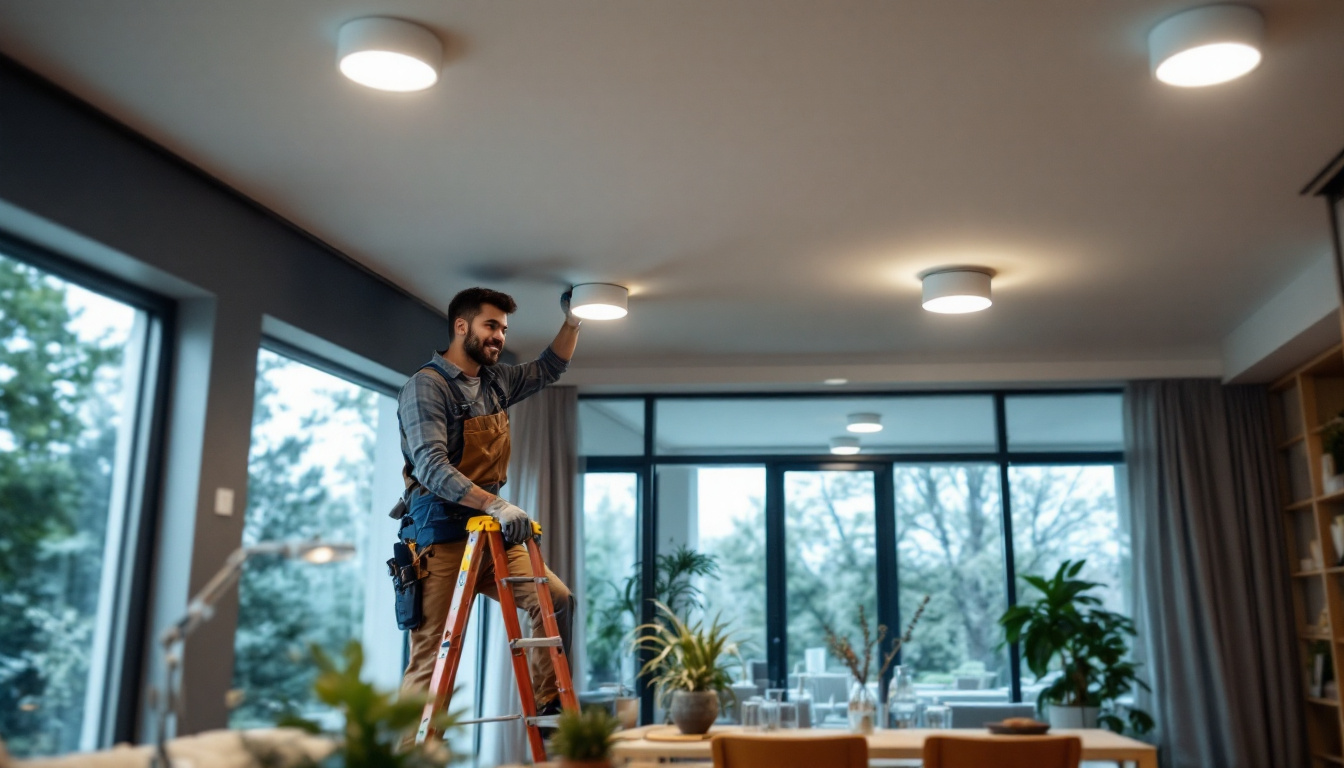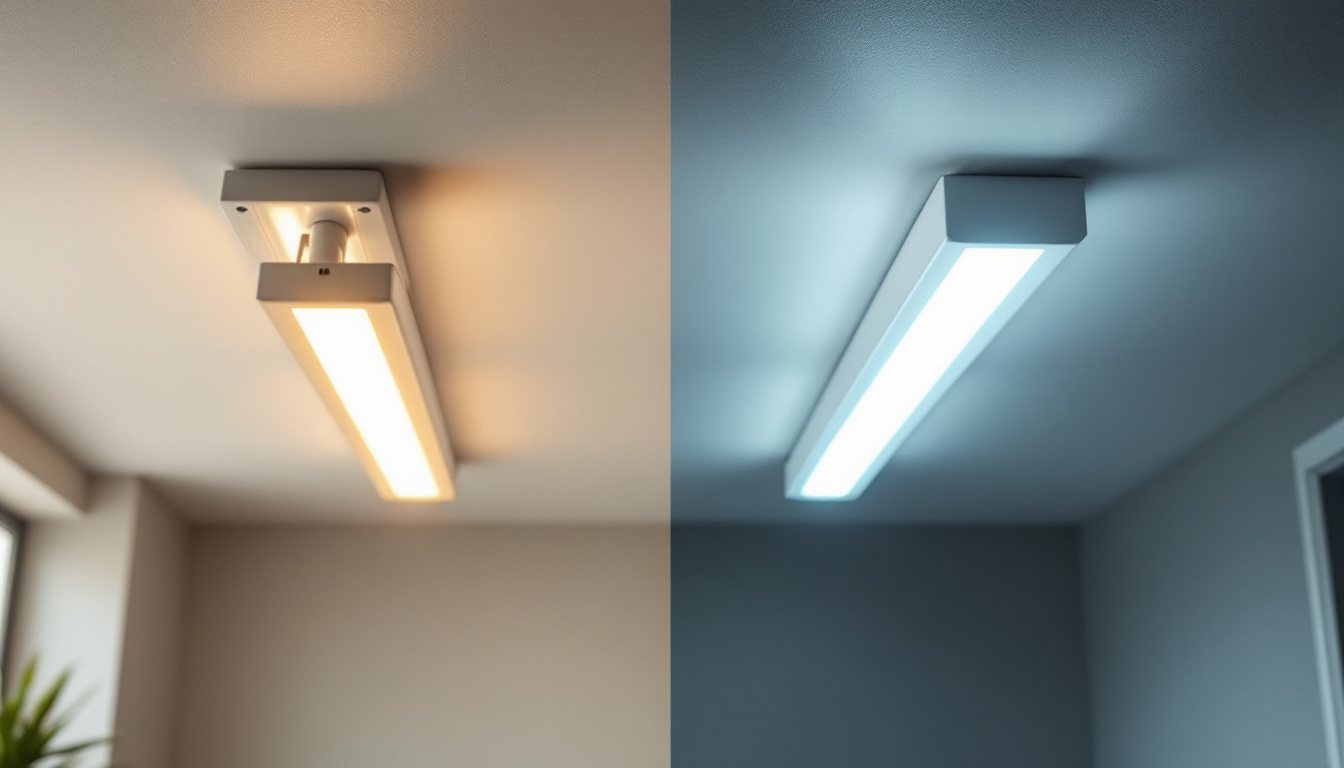
In the world of interior design and construction, lighting plays a pivotal role in enhancing the ambiance and functionality of a space. For lighting contractors, understanding the nuances of recessed canned lighting can significantly impact project success. This article delves into the various aspects of recessed canned lighting, providing valuable insights and strategies that can help contractors maximize their effectiveness and client satisfaction.
Recessed canned lighting, often referred to as pot lights or downlights, is a popular choice for both residential and commercial applications. These fixtures are installed into the ceiling, creating a clean and unobtrusive look that allows for versatile lighting solutions. Understanding the components, benefits, and installation techniques of recessed lighting is essential for contractors aiming to deliver high-quality results.
Recessed lighting systems consist of several key components: the housing, trim, and bulb. The housing is the part that is installed into the ceiling and contains the wiring and electrical connections. It is crucial to choose the right housing for the specific application, as different types are designed for various ceiling materials and insulation levels. For instance, IC-rated housings are essential for insulated ceilings to prevent overheating, while non-IC-rated options are suitable for ceilings where insulation is not a concern.
The trim, which is the visible part of the fixture, comes in various styles and finishes, allowing for customization to match the aesthetic of the space. Options range from baffle trims that reduce glare to reflector trims that enhance brightness. Finally, the bulb type—whether LED, incandescent, or halogen—affects the energy efficiency, brightness, and color temperature of the light produced. Understanding these components will enable contractors to make informed decisions that align with client preferences and project requirements. Additionally, the choice of bulb can influence the overall mood of a room; for example, warm white bulbs create a cozy atmosphere, while cool white bulbs are better suited for task-oriented areas like kitchens or offices.
One of the primary benefits of recessed canned lighting is its ability to provide a clean, modern look without compromising on illumination. This type of lighting can create a sense of openness and spaciousness, making it ideal for smaller rooms or areas with low ceilings. Additionally, recessed lighting can be strategically placed to highlight architectural features, artwork, or specific zones within a space. By utilizing multiple fixtures, designers can create layered lighting effects that enhance the overall aesthetic and functionality of the environment.
Energy efficiency is another significant advantage, especially with the increasing popularity of LED bulbs. These bulbs consume less power and have a longer lifespan compared to traditional incandescent options, providing cost savings for both contractors and clients over time. Furthermore, the ability to dim recessed lights adds versatility, allowing users to adjust the ambiance according to their needs. This feature is particularly beneficial in spaces that serve multiple purposes, such as living rooms or home theaters, where lighting requirements can shift dramatically. Moreover, incorporating smart technology into recessed lighting systems can further enhance control, enabling users to manage their lighting remotely or set schedules for automated adjustments throughout the day.
Proper installation of recessed canned lighting is critical to achieving optimal performance and aesthetic appeal. Lighting contractors must be well-versed in the best practices for installation to avoid common pitfalls and ensure client satisfaction.
Before installation begins, careful planning and layout are essential. Contractors should consider the purpose of the space, the desired lighting effect, and the placement of furniture and fixtures. A well-thought-out layout can help avoid shadows and ensure even distribution of light throughout the area.
Utilizing design software can aid in visualizing the placement of recessed lights, allowing for adjustments before any physical work begins. Taking accurate measurements and marking the ceiling where fixtures will be installed can streamline the process and minimize errors during installation. Additionally, it is important to consider the height of the ceiling and the beam angle of the fixtures, as these factors will influence how light is distributed in the room. For instance, a room with high ceilings may require fixtures with a narrower beam angle to focus light more effectively, while lower ceilings might benefit from wider beam angles to create a more ambient light effect.
Electrical safety is paramount when installing recessed canned lighting. Contractors must ensure that all electrical connections comply with local codes and regulations. This includes using appropriate wiring, junction boxes, and circuit breakers to handle the load of the lighting system.
It is also advisable to use fixtures that are rated for the specific environment, particularly in areas with moisture, such as bathrooms or kitchens. Proper insulation and ventilation around the housing can prevent overheating and ensure longevity of the fixtures. Furthermore, contractors should consider the use of dimmer switches, which can enhance the versatility of the lighting setup. Dimming capabilities allow homeowners to adjust the brightness according to their needs, creating a cozy atmosphere for gatherings or brightening the space for tasks such as cooking or reading. When selecting dimmers, it is crucial to ensure compatibility with the type of bulbs being used, as not all LED or incandescent lights work seamlessly with every dimmer model.
Successful lighting contractors understand that their relationship with clients is as important as the technical aspects of the job. Building strong relationships can lead to repeat business and referrals, which are essential for long-term success in the industry.
Clear and effective communication is the foundation of a successful contractor-client relationship. From the initial consultation to project completion, keeping clients informed about timelines, costs, and any potential challenges can foster trust and transparency.
Listening to client needs and preferences is equally important. By understanding their vision and expectations, contractors can tailor their lighting solutions to meet specific requirements, enhancing overall satisfaction with the final result.
Offering value-added services can set contractors apart from the competition. This could include providing design consultations, energy efficiency assessments, or post-installation support. Educating clients about the benefits of different lighting options and maintenance practices can also enhance their experience and lead to a more informed decision-making process.
Additionally, providing warranties or guarantees on workmanship can instill confidence in clients, reassuring them that their investment is protected. This commitment to quality can lead to positive reviews and referrals, further boosting the contractor’s reputation in the industry.
The lighting industry is constantly evolving, with new technologies and design trends emerging regularly. For lighting contractors, staying informed about these changes is crucial for maintaining a competitive edge and meeting client expectations.
One of the most significant advancements in lighting technology is the rise of smart lighting systems. These systems allow users to control their lighting remotely via smartphones or voice-activated devices, providing convenience and flexibility. Contractors should familiarize themselves with these technologies to offer clients innovative solutions that enhance their living or working environments.
Additionally, advancements in LED technology continue to improve energy efficiency and color rendering, making it essential for contractors to stay updated on the latest products and trends. Understanding the benefits of tunable white lighting and color-changing options can help contractors provide tailored solutions that meet specific client needs.
Design trends in lighting are also evolving, with a growing emphasis on minimalism and sustainability. Recessed lighting is often favored for its ability to blend seamlessly into a space, allowing other design elements to take center stage. Contractors should be aware of current trends in interior design to provide recommendations that align with client aesthetics.
Incorporating sustainable practices, such as using energy-efficient fixtures and environmentally friendly materials, can also appeal to eco-conscious clients. By staying attuned to design trends and sustainability practices, contractors can position themselves as knowledgeable and forward-thinking professionals in the industry.
To thrive in a competitive market, lighting contractors must implement effective marketing strategies that showcase their expertise and attract potential clients. A well-rounded marketing approach can significantly enhance visibility and drive business growth.
In today’s digital age, having a strong online presence is essential for any contractor. This includes creating a professional website that highlights services, showcases past projects, and provides client testimonials. A well-designed website can serve as a powerful marketing tool, allowing potential clients to learn more about the contractor’s expertise and offerings.
Additionally, leveraging social media platforms can help contractors connect with a broader audience. Sharing project photos, design tips, and industry insights can engage followers and establish the contractor as a knowledgeable resource in the field. Regularly updating content and interacting with followers can foster a sense of community and trust.
Networking with other professionals in the construction and design industries can open doors to new opportunities. Building relationships with architects, interior designers, and real estate agents can lead to referrals and collaborative projects, expanding the contractor’s client base.
Participating in industry events, trade shows, and local business organizations can also enhance visibility and credibility. By establishing a strong network, contractors can tap into a wealth of resources and support that can contribute to their success.
Recessed canned lighting offers a versatile and modern solution for various lighting needs, making it a valuable option for lighting contractors. By understanding the components, installation techniques, and benefits of recessed lighting, contractors can deliver exceptional results that meet client expectations.
Moreover, focusing on client relationships, staying current with industry trends, and implementing effective marketing strategies can further enhance success in this competitive field. As the demand for innovative lighting solutions continues to grow, contractors who adapt and evolve will be well-positioned to thrive in the ever-changing landscape of the lighting industry.
Ready to elevate your lighting projects with the highest quality recessed canned lighting? Look no further than LumenWholesale. We provide lighting contractors with spec-grade products that meet the most rigorous industry standards, ensuring that your installations shine above the rest. With our direct-to-contractor pricing, you’ll enjoy the best value without the burden of inflated markups. Plus, our commitment to hassle-free bulk purchasing with free shipping means you can stock up on superior lighting solutions while keeping your costs down. Don’t compromise on quality or price. Discover the LumenWholesale difference today and bring unparalleled lighting excellence to your clients.

Explore the pros and cons of Bluetooth recessed lights compared to other lighting options.

Discover the transformative benefits of switching from fluorescent lights to LED in your lighting installations.

Discover how Sylvania Light can transform your lighting projects and boost your business.

Discover innovative hacks for smart lighting contractors to enhance their hi hat lighting projects.